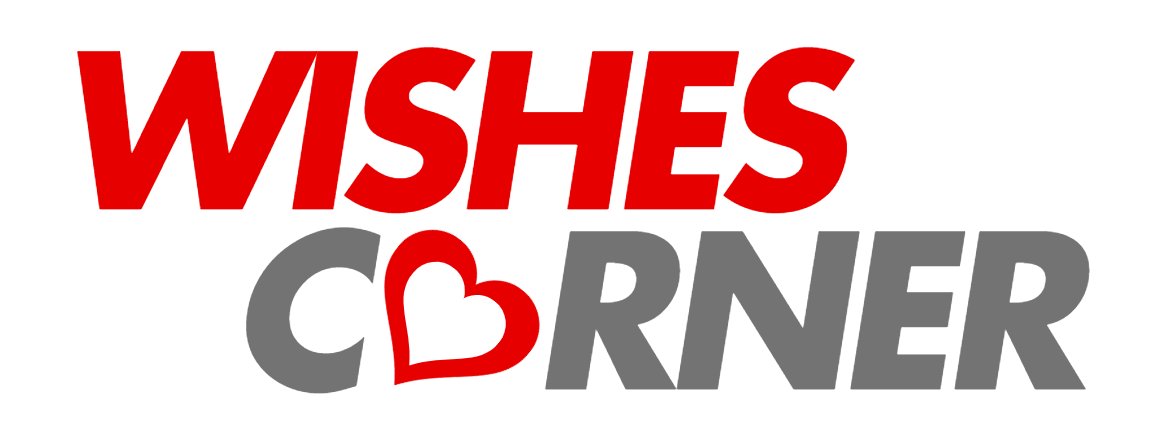Introduction
National Baby-Led Weaning Day is a celebration dedicated to an innovative approach to introducing solid foods to infants. Baby-led weaning (BLW) allows babies to self-feed right from the start, promoting independence and healthy eating habits. This day not only highlights the benefits of BLW but also provides support and resources to parents exploring this method. In this article, we delve into the history, principles, and benefits of baby-led weaning, while sharing inspiring stories and practical tips for parents.
The Origins of Baby-Led Weaning
Understanding Baby-Led Weaning
Baby-led weaning is an approach to introducing solid foods that emphasizes allowing infants to feed themselves. Unlike traditional weaning methods, which involve spoon-feeding purees, BLW encourages babies to explore a variety of foods at their own pace. This method was popularized by Gill Rapley, a former health visitor and midwife, who published the book “Baby-Led Weaning: Helping Your Baby to Love Good Food” in 2008.
The Birth of National Baby-Led Weaning Day
National Baby-Led Weaning Day was established to raise awareness about the benefits of BLW and to provide a platform for parents and caregivers to share experiences and advice. Celebrated annually, this day aims to empower parents to make informed decisions about their baby’s nutrition and to promote healthy eating habits from an early age.
Read More: Zip Code Day
The Principles of Baby-Led Weaning
Letting Babies Take the Lead
The core principle of baby-led weaning is allowing babies to take the lead in their eating journey. This means offering a variety of foods in manageable pieces and letting the baby choose what and how much to eat. The focus is on exploration and enjoyment rather than strict schedules or portion sizes.
Emphasizing Whole Foods
BLW encourages the introduction of whole foods rather than purees. Foods are cut into appropriate sizes that the baby can grasp and bring to their mouth. This method promotes the development of fine motor skills and hand-eye coordination.
Family Mealtime
Baby-led weaning promotes the idea of shared family meals. Babies are included in regular family meals from the start, which helps them learn by observing and imitating others. This fosters a positive relationship with food and encourages social interaction during mealtimes.
Safety First
Safety is paramount in baby-led weaning. Parents are advised to follow guidelines to ensure their baby’s safety while self-feeding. This includes offering appropriate food sizes, avoiding choking hazards, and supervising meals at all times.
The Benefits of Baby-Led Weaning
Developing Healthy Eating Habits
One of the primary benefits of BLW is the promotion of healthy eating habits. Babies who are allowed to explore different foods and textures are more likely to develop a preference for a wide variety of healthy foods. This early exposure can lead to better eating habits later in life.
Encouraging Independence
Baby-led weaning encourages independence and self-regulation. Babies learn to listen to their hunger cues and stop eating when they are full, which can help prevent overeating and promote a healthy relationship with food.
Enhancing Motor Skills
Self-feeding helps babies develop fine motor skills and hand-eye coordination. Picking up pieces of food and bringing them to their mouth requires precision and control, which are important developmental milestones.
Reducing Mealtime Stress
BLW can reduce mealtime stress for both parents and babies. Without the pressure to spoon-feed or adhere to strict schedules, mealtimes become a relaxed and enjoyable experience. Parents can focus on eating their own meals while supervising their baby.
Practical Tips for Successful Baby-Led Weaning
Getting Started
- Wait for Signs of Readiness: Ensure your baby is ready for solid foods by looking for signs such as sitting up with minimal support, showing interest in food, and having good head control. Most babies are ready around six months of age.
- Choose the Right Foods: Start with soft, easy-to-handle foods like steamed vegetables, ripe fruits, and well-cooked meats. Cut foods into sticks or strips that your baby can grasp.
- Create a Safe Environment: Use a high chair with a footrest to support your baby’s posture. Ensure the eating area is free from distractions and potential hazards.
Introducing Foods
- Offer a Variety: Introduce a wide range of foods to expose your baby to different tastes and textures. Include vegetables, fruits, grains, and proteins in their diet.
- Avoid Choking Hazards: Avoid foods that pose a choking risk, such as whole nuts, grapes, and hard raw vegetables. Cut food into appropriate sizes and shapes.
- Be Patient: Allow your baby to explore and play with their food. It may take time for them to develop the coordination to self-feed effectively.
Encouraging Healthy Eating
- Model Healthy Eating: Eat a variety of healthy foods in front of your baby. Babies learn by observing and imitating, so set a positive example.
- Stay Positive: Keep mealtimes positive and stress-free. Avoid pressuring your baby to eat specific foods or quantities.
- Monitor Progress: Keep an eye on your baby’s development and consult with your pediatrician if you have any concerns about their eating habits or nutritional intake.
Inspiring Stories of Baby-Led Weaning
Emma’s Journey to Independence
Emma, a mother of two, was initially skeptical about baby-led weaning. However, after seeing how her daughter, Lily, struggled with traditional weaning, she decided to give BLW a try with her second child, Max. To her surprise, Max quickly adapted to self-feeding and showed a preference for a variety of foods. Emma noticed that mealtimes became less stressful, and Max developed a strong sense of independence and confidence. Today, Max is a happy, adventurous eater who enjoys trying new foods.
Sarah’s Success Story
Sarah, a working mom, found it challenging to balance her job and mealtime routines. She discovered baby-led weaning through a parenting group and decided to implement it with her son, Alex. The flexibility of BLW allowed Sarah to enjoy meals with her family without the pressure of spoon-feeding. Alex thrived on the variety of foods offered and developed excellent motor skills and eating habits. Sarah credits baby-led weaning for making family mealtimes a joyful and stress-free experience.
David’s Delightful Discovery
David, a stay-at-home dad, was eager to try baby-led weaning with his daughter, Sophie. From the first meal, Sophie showed excitement and curiosity about the foods on her plate. David enjoyed watching Sophie explore different tastes and textures, and he appreciated the simplicity and convenience of BLW. The positive experience strengthened their bond and made mealtimes a cherished part of their daily routine.
The Emotional and Motivational Aspects of Baby-Led Weaning
Building Confidence and Trust
Baby-led weaning builds confidence in both babies and parents. Babies develop self-feeding skills and learn to trust their instincts, while parents gain confidence in their child’s ability to manage their own eating. This mutual trust fosters a strong parent-child bond and encourages a positive relationship with food.
Fostering Independence
Allowing babies to take control of their eating fosters independence and self-reliance. Babies learn to make choices, manage portions, and listen to their hunger cues. This early autonomy lays the foundation for future decision-making and problem-solving skills.
Creating Joyful Mealtimes
Baby-led weaning transforms mealtimes into a joyful and interactive experience. Families can enjoy meals together, share conversations, and celebrate milestones. This positive environment encourages a lifelong appreciation for food and family bonding.
The Role of National Baby-Led Weaning Day
Raising Awareness
National Baby-Led Weaning Day plays a crucial role in raising awareness about the benefits and principles of BLW. Through social media campaigns, educational resources, and community events, this day spreads knowledge and encourages parents to consider this approach.
Providing Support
National Baby-Led Weaning Day offers support to parents and caregivers by providing access to expert advice, success stories, and practical tips. Online forums and local support groups create a sense of community and shared experience.
Celebrating Success
This day is an opportunity to celebrate the success stories of families who have embraced baby-led weaning. Sharing these stories inspires and motivates others to explore BLW and experience the positive impact it can have on their family.
The Future of Baby-Led Weaning
Continuing Research
Ongoing research into the benefits and outcomes of baby-led weaning will continue to shape best practices and guidelines. Studies exploring the long-term effects on eating habits, nutrition, and development will provide valuable insights for parents and healthcare providers.
Expanding Resources
As awareness of baby-led weaning grows, so will the availability of resources. More books, online courses, and expert consultations will become accessible, helping parents make informed decisions and implement BLW successfully.
Promoting Inclusive Practices
Baby-led weaning can be adapted to meet the needs of all families, including those with specific dietary requirements or cultural practices. Promoting inclusive and flexible approaches ensures that all families can benefit from the principles of BLW.
Conclusion
National Baby-Led Weaning Day is a celebration of a revolutionary approach to introducing solid foods to infants. By allowing babies to take the lead in their eating journey, baby-led weaning promotes independence, healthy eating habits, and joyful mealtimes. This day provides a platform for raising awareness, sharing success stories, and offering support to parents and caregivers. As we celebrate National Baby-Led Weaning Day, let us embrace the principles of BLW and empower our babies to explore, enjoy, and thrive in their relationship with food.
References
- Rapley, G., & Murkett, T. (2008). Baby-Led Weaning: Helping Your Baby to Love Good Food. Vermilion.
- First Steps Nutrition Trust. (2015). Baby-led weaning – what does the evidence tell us? Retrieved from First Steps Nutrition Trust
- American Academy of Pediatrics. (2020). Starting Solid Foods. Retrieved from AAP
- NHS. (2021). Your baby’s first solid foods. Retrieved from NHS
FAQs
- What is baby-led weaning? Baby-led weaning is an approach to introducing solid foods that allows babies to self-feed from the start, promoting independence and healthy eating habits.
- When should I start baby-led weaning? Most babies are ready for solid foods around six months of age. Look for signs of readiness, such as sitting up with minimal support, showing interest in food, and having good head control.
- What are the benefits of baby-led weaning? Benefits include developing healthy eating habits, encouraging independence, enhancing motor skills, and reducing mealtime stress.
- How can I ensure my baby’s safety during baby-led weaning? Ensure safety by offering appropriate food sizes, avoiding choking hazards, supervising meals at all times, and creating a safe eating environment.
- How can I celebrate National Baby-Led Weaning Day? Celebrate by learning about BLW, sharing experiences and success stories, participating in community events, and supporting other parents and caregivers.






